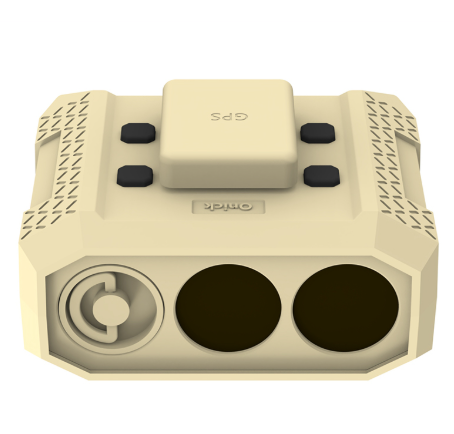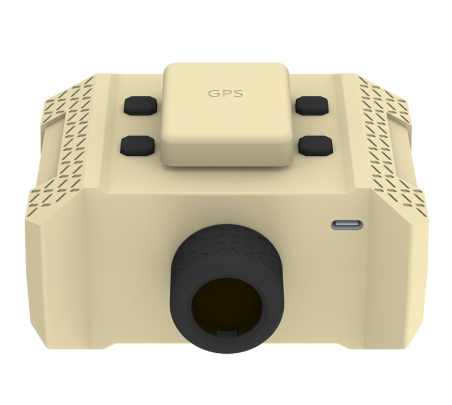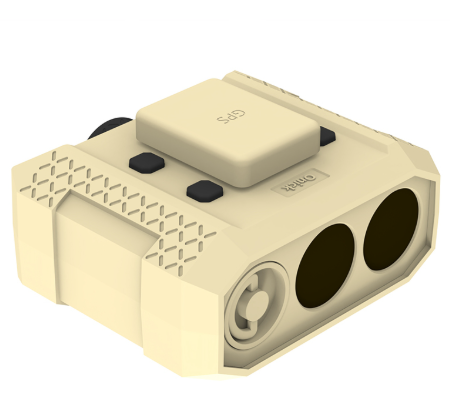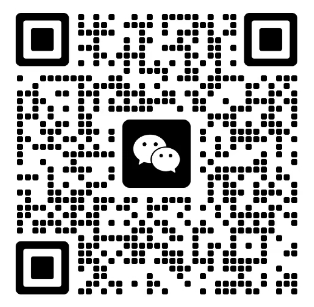At an altitude of 10,000 meters, fighter pilot Lao Zhang stared at the looming "enemy aircraft" signal on the radar screen. The cold wind of minus 50℃ whistled outside the cabin, and a string of garbled codes popped out of the laser rangefinder in his hand. In the last exercise, the equipment failed due to low temperature and missed the golden 3 seconds to lock the target. After returning, he was scolded by the instructor and "couldn't raise his head"; in another night raid, strong electromagnetic interference caused the ranging data to soar in error, and the missile almost deviated from the track... These scenes are the daily pain of air force soldiers: unable to measure far, unable to measure accurately, unable to bear, short endurance, and broken functions. Until the emergence of the onick 5000X laser rangefinder, these problems were crushed one by one.

Far-reaching measurement: Penetrating clouds, locking enemies thousands of miles away
"In the past, when using old equipment, the target 5,000 meters away was like a layer of frosted glass, and the data was more scattered than clouds." During a training session, when tracking a drone flying at ultra-low altitude, the old rangefinder "went on strike" due to the interference of clouds, and finally relied on visual observation, with an error so large that "it could use friendly bases as targets." The 1.064-micron wavelength laser of the onick 5000X has a penetration power comparable to that of the "eye in the sky". It can lock onto a mobile target drone 5 kilometers away in thick fog, penetrate cumulonimbus clouds in a storm and directly hit camouflaged fortifications on the ground, and even calculate the spacing of rivets on the enemy's wings. What's even more amazing is the digital range selection function. During the exercise, when encountering strong electromagnetic interference, a finger swipe can "cut" out a pure target area from 30 meters to 5,000 meters, automatically filter out clutter, and forcibly "pick" out a hidden reconnaissance drone from the electronic fog, which is more like radar than radar.
Accurate measurement: error of 0.5 meters, "millimeter-level surgery" between life and death
"A one-meter difference in altitude means a thousand-meter deviation in missiles!" Lao Zhang once caused a missile to detonate prematurely due to a ranging error, almost accidentally hitting a civilian route. The military-grade accuracy of onick 5000X, with a maximum error of ±0.5 meters, makes "a millimeter difference" a thing of the past. During last year's polar exercise, the enemy set up fake targets in the cracks of the glacier. Lao Zhang used onick 5000X to measure three times in a row, and the data was as stable as a rock. With the help of the fire control system, the real target was hit in one shot, and "even the trajectory of the ice ridges could be predicted."

Battery durability: -50℃ does not freeze, and thousands of times of battery life are uninterrupted
The air temperature at high altitudes is often dozens of degrees below zero, and it is normal for ordinary equipment batteries to "freeze". During a high-altitude combat patrol, Lao Zhang's old rangefinder ran out of power at -40℃, and finally relied on body temperature to warm the battery compartment to barely start the machine. The military wide-temperature battery of onick 5000X can work continuously for 48 hours in a -50℃ ice storm, and the battery is still 35% after a thousand distance measurements. The maintenance soldiers jokingly call it "more durable than a turbofan engine" - during the last hangar maintenance, the equipment fell from a 3-meter-high maintenance table, and the shell was dented, but it was still as accurate as before when it was picked up.
Full-featured: one cabin on top of the machine, "idiot-proof" combat process
In the past, when performing missions, pilots had to operate the rangefinder, goniometer, and data terminal in turn in the small cockpit, which was as chaotic as "juggling". The multi-functional integration of onick 5000X completely frees your hands: dual-target synchronous measurement, instantly measuring the enemy aircraft's elevation angle, distance, horizontal spacing and height difference; 81 sets of data are automatically stored, and after returning, one-click export generates combat reports; the backlit crosshairs at night are brighter than the cockpit instrument panel; the tripod interface is adapted to the airborne bracket, and long-duration reconnaissance no longer "shakes like Parkinson's"; even more considerate is the rotatable eyepiece, which allows radar operators with 600-degree myopia to focus in seconds without wearing glasses.

King of durability: Unbreakable by falling, flooding, and sand and dust
"I'm afraid this thing is made of the skin of the J-20!" The ground crew smiled and showed an onick 5000X. The fuselage was covered with scratches, which were "medals" from being blown up by a sandstorm and smashed against rocks during desert training; the side interface was covered with aviation fuel, which was accidentally splashed during the last maintenance, but it can still be turned on by flushing it with the faucet; the three-proof fuselage withstood the simulated nuclear explosion shock wave test, and even the general joked that "it should be awarded a military medal."
From the sky to the ground, from the polar regions to the desert, the onick 5000X laser rangefinder has redefined the standard of air combat equipment with its 5km ultra-long range, ±0.5m military accuracy, thousand-time endurance, all-round integration, and durability. It is not a cold instrument, but the pilot's "extended senses" - when it locks onto the target at an altitude of 10,000 meters, you will suddenly realize: the so-called "air supremacy" means the absolute control of seeing the enemy one second earlier and striking with an accuracy of one meter.


